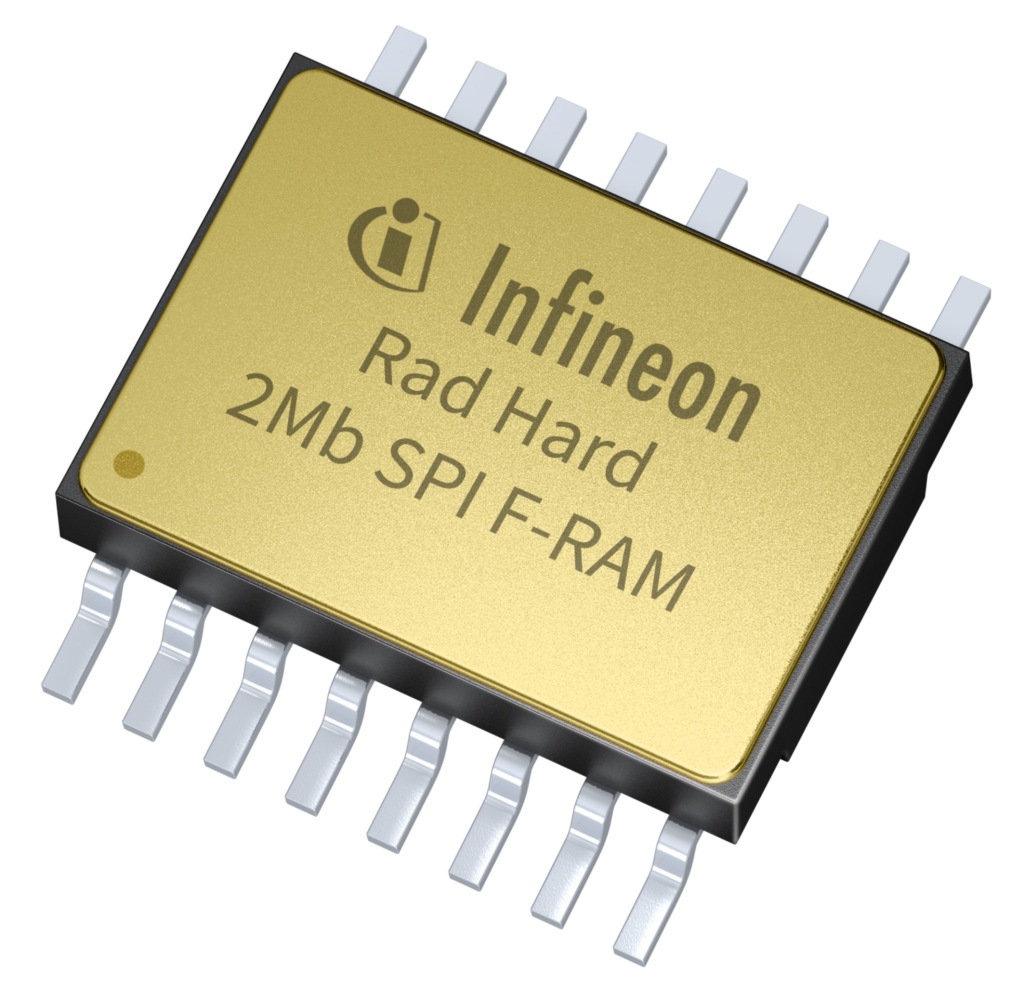 0
0








 0
0









A new ferroelectric RAM (FRAM) memory chip claims to overcome two major challenges in space design: radiation and limited power. Infineon Technologies LLC, part of Infineon Technologies AG specializing in memory solutions, claims its new serial interface FRAM has inherently radiation-hardened memory cells. They are not affected by magnetic fields and therefore do not react to charged particles like MRAM devices.
Next, this FRAM device has a maximum operating current of 10 mA minimum and a very low programming voltage of 2 V. "This is critical because space designs have limited power from solar panels," said Helmut Puchner, Vice President Aerospace and Defense at Infineon Technologies. "When the energy is depleted and the payload goes into sleep or hibernation mode, the battery needs to be recharged," he added. "When the system comes back up, you want to keep critical information in memory so you can pick up where you left off."
Coupled with non-volatility, this radiation-hardened FRAM is a drop-in replacement for serial NOR flash and EEPROM for data logging of mission-critical data, telemetry storage, and command and control calibration data storage. It can also be used to provide boot code storage for microcontrollers and FPGAs.

Figure 1 FRAM memory chips provide data storage services for sensors and instruments for telemetry, tracking and control, data logging of satellite calibration data, and processor startup code applications
Highly reliable, high-performance, and high-density memory has always been a challenging component for the aerospace industry to find and procure aerospace-grade processors and FPGAs. This space-qualified FRAM device is designed to achieve vacuum in extreme environments with 2 Mb density and non-volatile storage.
FPGA memory matching
In retrospect, as Puchner said, when the aerospace industry started adopting FPGAs more than a decade ago, it fundamentally changed. For the first time, the space industry has relatively high-capacity computing systems that meet radiation requirements, and has shifted some computing tasks from ground stations to satellites.
These FPGAs now require infrastructure, including memory that enables the higher performance and throughput required for compute-intensive, space-constrained applications. "There's a new memory here to help with their computing needs," Puchner said. "Radiation-hardened FRAM is not an ultra-high performance computing chip, but it is non-volatile and still adds a lot of value to the system."
Another improvement comes from its support for the standard Serial Peripheral Interface (SPI) protocol to serve pin-constrained space designs. "Serial interfaces don't waste a lot of pins," he added. This is why serial protocols are increasingly used in satellite and space applications, and vendors now offer space-grade processors and FPGAs that support SPI.

Figure 2 The serial interface is easy to use and supports a smaller footprint and lower pin count.
With SPI support and 2 Mb density, operating from 2.0 V to 3.6 V, FRAM devices offer virtually unlimited endurance, no wear leveling, 10 trillion read/write cycles, and 120 years of data retention at 85°C .
2 Mb radiation hardened, nonvolatile serial interface FRAM is available now.